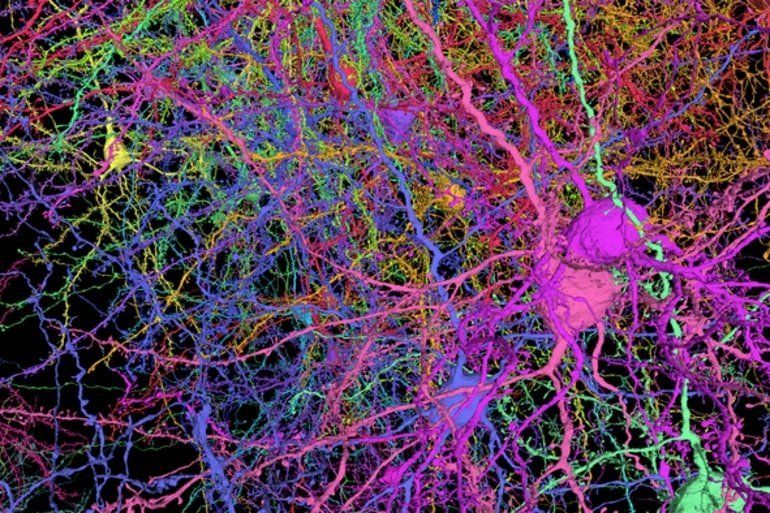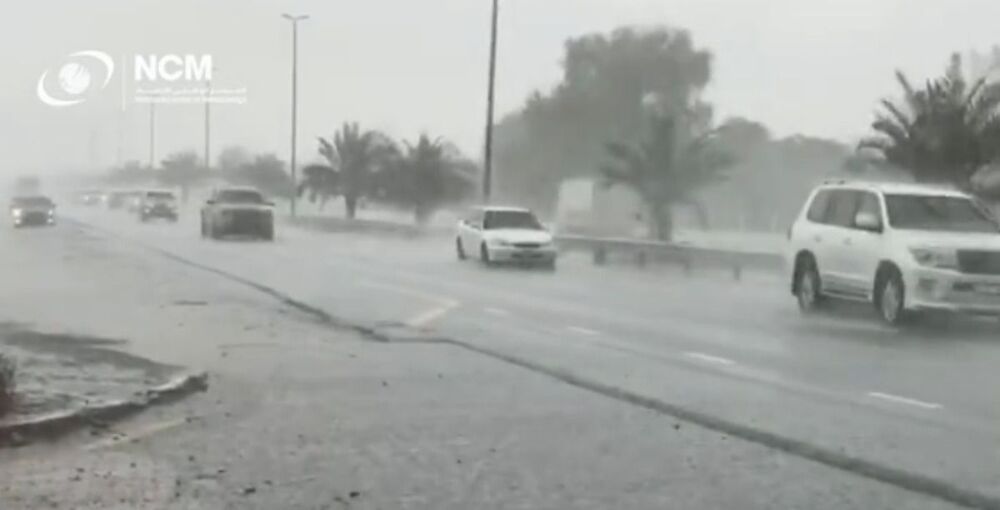We’ve seen various vertical take-off and landing (VTOL) vehicle designs in the past. From contraptions that feature no wings to air taxis with massive propellers, there are many options to choose from when it comes to VTOLs. But this new aircraft has something unique that allows it to fold its wings and turn into a multirotor drone.
Category: drones – Page 73

Neuroscientists Unveil Wiring Diagram Containing 200,000 Cells and Nearly Half Billion Connections in Tiny Piece of a Mouse’s Brain
Summary: Researchers have compiled a new, highly detailed 3D brain map that captures the shapes and activity of neurons in the visual neocortex of mice. The map is freely available for neuroscience researchers and artificial intelligence specialists to utilize.
Source: Allen Institute
Researchers from the University of Reading, in the UK, are using drones to give clouds an electrical charge, which could help increase rainfall in water-stressed regions.

Drones could help save soldiers’ lives by delivering blood on demand
Getting blood to a wounded soldier could be the difference between life and death. A drone swarm is one way to make that happen in battle.
Blood is usually a finite quality on a battlefield. Battles can cause a number of injuries, from the minor to the critical. If a soldier can get the wound closed in time, they can staunch the loss, but keeping the patient alive may require an influx of new blood. As medics work to aid their comrades, they could receive help from an unusual source: delivery drones, bringing literal fresh blood to the battlefield.
A drone swarm capable of delivering blood was part of Autonomous Advance Force 4.0, an exercise by the United Kingdom’s armed forces in which Royal Marines Commandos trained with modern technology for future war. The July exercise took place in Cumbria and Dorset, with a release announced July 17.
The swarm consisted of six medium-heavy lift drones, Malloy Aeronautics TRV-150s. The TRV-150 can carry up to 140 lbs, at a range of up to 43 miles, with a maximum flight time of 36 minutes. Malloy drones got their start back in 2014 as a hoverbike concept, which was then proposed for the US military as a kind of ridden-drone scout. The US Army explored a large version of the drone as a “tactical resupply” vehicle in 2017. In TRV-150 form, the drone is an octocopter, with two rotors on each of four limbs.
Dubai makes its own RAIN to tackle 122F heat: Drones blast clouds with electrical charge to produce
Dubai uses drones to electrically charge clouds, causing tortential rains in one of the driest nations on Earth. Until now, such experiments had been done succeessfully from the ground only.
Info — Viral — Fun.
#Real #Dubai #makes #its #own #RAIN #to #tackle #122F #heat: #Drones #blast #clouds #with #electrical #charge #to #produce #downpours.
#The #rain #is #formed #using #drone #technology #that #gives #clouds #an #electric #shock #to #‘cajole #them’ #into #clumping #together #and #producing #precipitation.
The #UAE #is #one #of #the #most #arid #countries #on #Earth #and #the #technique #helps #to #increase #its #meagre #annual #rainfall #Video #shows #it #is #working #with #monsoon-like #downpours #across #the #country.
Dubai makes its own RAIN to tackle 122F heat: Drones blast clouds with electrical charge to produce downpours.
The rain is formed using drone technology that gives clouds an electric shock to ‘cajole them’ into clumping together and producing precipitation.
The UAE is one of the most arid countries on Earth and the technique helps to increase its meagre annual rainfall.
Video shows it is working with monsoon-like downpours across the country.
******************************************
Donate & Support the needy people (JUSTGIVING).
https://www.justgiving.com/crowdfunding/infoviralfun-help-po…=x72BzB5ZX
Subscribe our Channel:
http://bit.ly/2QkMlFb.
Top Video:
http://bit.ly/36OpU07
My Favorite:
Autonomous flight algorithm beats ‘world-class’ human drone racing pilots [video]
There are many reasons for drones to be quick. The professional drone racing circuit aside, speed bodes well when you are searching for survivors on a disaster site, or delivering cargo, or even inspecting critical infrastructure. But how do you get something done in the shortest possible time with limited battery life when you have to navigate through obstacles, changing speeds, and altitude? You use an algorithm.

Dubai is making its own fake rain to beat 122F heat
Its cloud seeding operations are part of an ongoing mission to generate precipitation in the Middle East country, which has an average rainfall of just four inches.
The enhanced rain is created using drone technology that unleashes electrical charges into clouds in order for them to clump together and form precipitation.
The National reported the heavy rainfall caused waterfalls to appear in the city of Ail Ain and made driving conditions hazardous.
In an effort to curb the country’s sinking water table, the UAE invested $15 million in nine different rain-making projects in 2017.
Tesla Gigafactory Texas is taking shape in new drone flyover video
A new drone flyover of Tesla Gigafactory Texas is showing some great progress, and it’s even starting to look like the render of the finished building.
The start of production at Gigafactory Texas and Gigafactory Berlin is the most important thing for Tesla’s growth this year.
Starting production in any vehicle program is always difficult, and even more so when you are building a brand new factory from scratch.
US Marines testing high-tech drones flying low-tech military grenades
The US Marine Corps are testing tiny drones capable of performing a range of duties – including striking remote enemy targets with military-grade grenades. The application adds another reason to react fast to any buzzing sounds swiftly approaching from above… See More.
US Marines test the Australian Drone40, a high-tech, multifunctional drone capable of delivering military grenade payloads above targets.
The Greek Laser Weapon That Hits Drones Every 2–3 Seconds
The inventor of the first robot in Greece, Konstantinos Soukos, has pushed Greece into a new era by creating laser weapons that target drones.
When the inventor and businessman Konstantinos Soukos built the first robot in Greece in 1985, he did not imagine that 36 years later he would supply many military forces across the world.
One of the newest creations that stands out at the DEFEA 2021 Defence Exhibition in Athens is the High Energy Laser Weapon developed by the Soukos Robots company which promises to transfer energy at lightning speed.
